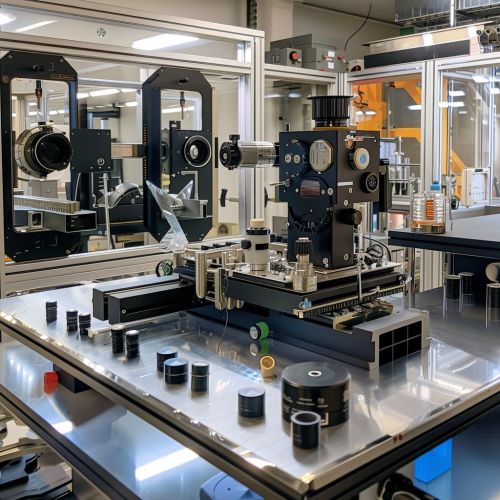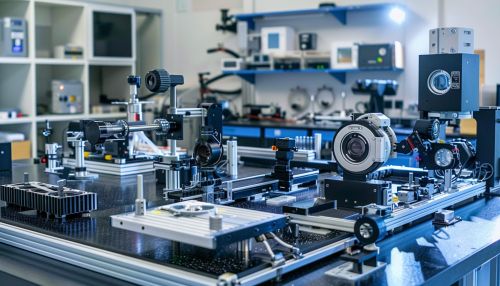Adaptive Optics
Introduction
Adaptive optics is a technology used to improve the performance of optical systems by reducing the effects of rapidly changing optical distortion. It is used in astronomical telescopes and laser communication systems to remove the effects of atmospheric distortion, in microscopy, optical fabrication and in retinal imaging systems to reduce optical aberrations. Adaptive optics works by measuring the distortion and rapidly compensating for it either using deformable mirrors or liquid crystal arrays.
History
The development of adaptive optics dates back to the early 1950s, when it was first proposed by astronomer Horace Babcock. His original idea was to correct for the atmospheric distortion of light, known as astronomical seeing, that blurs the images of stars and other celestial bodies. However, it was not until the 1970s that this technology was actually implemented, largely due to the development of suitable computer hardware.
Principles of Operation
Adaptive optics operates on the principle of wave-front reversal. This means that the incoming wave front is measured with a wave-front sensor, and then a deformable mirror is used to reflect a wave front that is the exact opposite of the measured one. This results in a double reversal of the wave front, effectively removing the distortion.
Wave-front Sensors
Wave-front sensors are a crucial component of any adaptive optics system. They are used to measure the distorted wave front. There are several types of wave-front sensors, including the Shack-Hartmann wave-front sensor, the curvature sensor and the pyramid sensor. Each type has its own advantages and disadvantages, and the choice of sensor largely depends on the specific application.
Deformable Mirrors
Deformable mirrors are mirrors whose surface can be deformed in order to compensate for the distortion in the wave front. The deformation is usually achieved using actuators that are attached to the mirror. There are several types of deformable mirrors, including continuous surface deformable mirrors and segmented deformable mirrors. The choice of mirror depends on the specific application and the degree of correction required.
Control Systems
The control system of an adaptive optics system is responsible for taking the measurements from the wave-front sensor and using them to control the deformable mirror. The control system usually consists of a computer running a real-time operating system, and software that implements the control algorithms.
Applications
Adaptive optics has a wide range of applications. In astronomy, it is used to correct for the atmospheric distortion of light, allowing telescopes to achieve a resolution close to their theoretical diffraction limit. In retinal imaging, it is used to correct for the optical aberrations of the eye, allowing for high-resolution imaging of the retina. In microscopy, it is used to correct for the optical aberrations introduced by the specimen and the immersion medium, allowing for high-resolution imaging of biological specimens. In laser communication systems, it is used to correct for the atmospheric distortion of the laser beam, allowing for high-speed, long-distance communication.
Future Developments
The field of adaptive optics is still evolving, with ongoing research aimed at improving the performance and reducing the cost of adaptive optics systems. Future developments may include the use of new types of wave-front sensors and deformable mirrors, the development of more efficient control algorithms, and the application of adaptive optics to new areas such as vision correction and optical fabrication.
See Also


